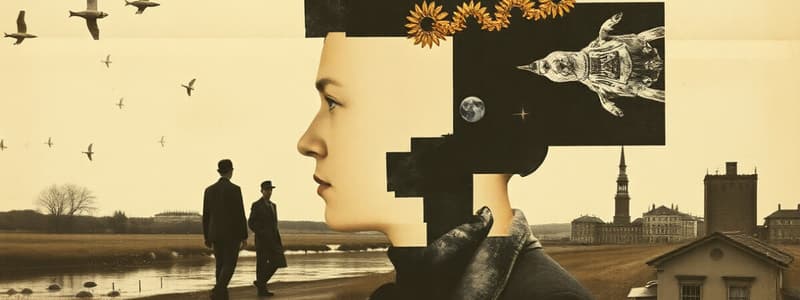Podcast
Questions and Answers
Given the provided content, what can we infer about the author's primary objective?
Given the provided content, what can we infer about the author's primary objective?
- To illustrate the user interface and features of CamScanner.
- To express personal opinions about the CamScanner app.
- To provide a detailed analysis of the CamScanner app.
- To create a visually engaging document using CamScanner. (correct)
Based on the content, which of the following is a potential use case for CamScanner?
Based on the content, which of the following is a potential use case for CamScanner?
- Conducting market research by analyzing consumer behavior captured through images.
- Generating interactive presentations for educational purposes.
- Developing advanced image-processing algorithms for medical applications.
- Creating high-quality, printable documents from physical materials. (correct)
From the content provided, what is a likely feature of CamScanner, considering the use of the "CamScanner" watermark?
From the content provided, what is a likely feature of CamScanner, considering the use of the "CamScanner" watermark?
- Secure cloud storage and file sharing options.
- A built-in tool for creating watermarks with customizable text and design. (correct)
- Advanced image editing functionality, including watermark removal.
- Automatic photo recognition and object tagging.
What can we infer about the content's creation process?
What can we infer about the content's creation process?
Considering the content and lack of textual information, what can be concluded regarding the overall message conveyed?
Considering the content and lack of textual information, what can be concluded regarding the overall message conveyed?
Flashcards
What is CamScanner?
What is CamScanner?
CamScanner is a mobile app designed to digitize documents using a smartphone camera.
How does CamScanner work?
How does CamScanner work?
CamScanner allows users to capture images of documents, crop and enhance them, and save them as PDF or other file formats.
What kind of documents can CamScanner scan?
What kind of documents can CamScanner scan?
CamScanner can be used to scan various documents such as receipts, notes, invoices, and books.
What is OCR in CamScanner?
What is OCR in CamScanner?
Signup and view all the flashcards
How can I share documents scanned with CamScanner?
How can I share documents scanned with CamScanner?
Signup and view all the flashcards
Study Notes
Nature of Perception
- Perception is the process of interpreting sensory information
- Sensation is the initial raw sensory input, while perception interprets and integrates this input with other sensory information.
- Perception organizes sensory stimuli into meaningful contexts, enabling understanding and meaning.
Definition of Perception
- Perception is the process of organizing and interpreting information to give it meaning
- It involves acquiring, processing sensory information
- Perception provides a meaningful awareness of the world
- Conscious awareness of objects and events are also part of perception
- Past experiences influence perception, affecting learning, memory, beliefs, and motivations.
Perceptual Organization
- Perception involves selecting, organizing and interpreting information our senses give us
- Organization allows us to separate objects from backgrounds, determine distances, and understand motion
- Figure and ground is a key principle of perceptual organization, where we separate figures from their surroundings
- Grouping is another principle, where we group stimuli perceived to be related
- Principles like continuity, proximity, and similarity are employed during grouping
Laws of Perceptual Organization
- Simplicity: People organize stimuli into the simplest possible form.
- Similarity: Similar elements are grouped together.
- Proximity: Items that are close together are seen as a group
- Continuity: Perception prefers continuous lines or patterns over disconnected ones
- Closure: Our minds complete incomplete figures.
Perceptual Constancy
- Perception maintains stability in size, shape, and color of objects even as sensory input changes depending on factors like distance, lighting etc.
Factors Affecting Perception
- Past experience influences perception of expectations
- Interest, Motivation, and attitudes influence what people attend to
- Expectations influence what is perceived
- Physical characteristics and conditions of objects affect perception
- Individual differences affect perception.
Motion Perception
- Perception of motion occurs when objects/stimuli change position over time
- Perception of motion can involve both real movement (actual change) and apparent movement (perceived change).
Time perception
- The duration of events affects the experience of time.
- Subjective factors like mental and physical state of the perceiver influence perceptions of time.
Illusions
- An illusion is an error in perception, characterized by misinterpreting sensory information.
- Illusions can be related to various senses: visual, auditory, etc.
- Illusions can arise from limitations of the sensory organs or from the way the brain processes information.
- There are many types of illusions: (visual, auditory, etc.) including geometric, size, shape, etc.
Studying That Suits You
Use AI to generate personalized quizzes and flashcards to suit your learning preferences.





